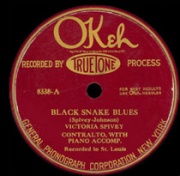The Blues
Contents |
Introduction
The Blues is a genre of music which grew out of the time of slavery in the southern states of USA at the end of the 19th century. Originally it was primarily a vocal form of music and it evolved out the spirituals songs, work songs, field hollers, shouts and chants of the working class African Americans initially of the Missippi Delta.
The Blues has developed into many sub genres such as Delta Blues, Memphis Blues, Chicago Blues, Detroit Blues, Boogie-Woogie Blues, Desert Blues and many more. The blues has also been influential in the development of what are now regarded as musical genres in their own right such as Jazz, Rock and Roll, R&B, Country and so on.
The Blues continues to be a popular musical form both as an influence and in a pure blues form.
What Is Blues?
Blues is generally based around a I, IV, V 12 bar chord progression, in 4/4 time.
| Chords Used For A 12 Bar Blues In C | |||
|---|---|---|---|
| C | C | C | C |
| F | F | C | C |
| G | G | C | C |
There are of course variations on this and very often minor seventh chords are used.
The Blues is usually played with a classic shuffle and/or walking bass feel.
E7 A7 E7 E7 E |----------------|----------------|----------------|----------------| B |----------------|----------------|----------------|----------------| G |----------------|----------------|----------------|----------------| D |----------------|2—2-4—2-5—2-4—2-|----------------|----------------| A |2—2-4-2-5-2-4—2-|0—0-0—0-0—0-0—2-|2—2-4—2-5—2-4—2-|2—2-4—2-5—2-4—2-| E |0—0-0—0-0—0-0—2-|----------------|0—0-0—0-0—0-0—2-|0—0-0—0-0—0-0—2-|
Blues melodies and solos are often built around the minor pentatonic scale with the addition of the flattened third or so called blues note.
The Minor Blues Format
| Chords Used For A 12 Bar Blues In A Minor | |||
|---|---|---|---|
| Am | Am | Am | Am |
| Dm | Dm | Am | Am |
| E | E | Am | Am |
“I woke up this morning!” A Short History Of The Blues
The Blues originated in the cotton fields and railroad chain gangs at the end of the 19th century. The Blues quickly became popular with the black working class of Memphiss. The "crossroads" fetured in the Sng of the same name by Robert Johnson is the intersection of Highways 61 and 49 in Memphis.
It is difficult to state categorically how or when it The Blues originally came to be recognised as for many years it went unrecorded or documented, being passed on only live. The first publication of Blues music in printed sheet music is thought to have occurred in 1912 with the publication of "Oh, You Beautiful Doll" by Hart A. Wand. The first verse of this song is based around the 12 bar blues form.
The development of the recording industry in the 1920s caused the spread of the blues. The first recorded blues song 'Crazy Blues' was by Mamie Smith,in 1920. This and other recordings led to Blues becoming nationally popular. Other female blues singers recorded around this time also including, Victoria Spivey and Bessie Smith. Very often these singers would play in band with musicians such as Luis Armstrong. THus blues influenced the development of jazz and paved thae way for singers such as Billie Holliday







